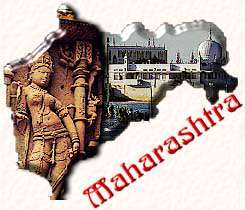The Ellora caves, dating back to the ancient and early medieval Indian era between 5th century CE to the 11th century CE, is located at a distance of 28 kilometers from Aurangabad, one of the leading cities in Maharashtra. These caves which are 30 in number and a combination of Jain, Buddhist and Hindu caves, symbolises the love and respect of all the religions in India, which has been in the root of Indian tradition and culture right from the ancient period, or rather since the prehistoric era.
The Caves
All the 30 excavated rock cut caves have been categorised into three parts:
- Buddhist Caves : Cave numbers 1 to 12 at the Southern end - 5th century CE to 7th century CE.
- Hindu Caves : Cave numbers 13 to 29 in the middle - 8th century CE to 10th century CE.
- Jain Caves : Cave numbers 30 to 34 at the northern end - 9th century CE to 11th century CE.
- The Buddhist Caves : The Buddhist caves, cave numbers 1 to 12, are the earliest structures of the Ellora caves, dating back to the 5th century CE to 7th century CE. These caves, which comprise mostly the monasteries or viharas, used by the Buddhist monks for their residential and meditation purposes, stretches up to the northern end of the Ellora. The Buddhist monasteries, dedicated to the Buddha, also includes the images of the Buddha, Bodhisattvas and other saints.
Architecture
The Buddhist caves, cave numbers 1 to 12, form an integral of the Ellora caves, the finest example of the cave and temple architecture in the Indian sub-continent. The Buddhist monasteries in the Ellora caves are large and multi-storeyed structures. The most important of all these cave shrines is the cave number 10, a Chaitya hall, which further consists of a large 15 feet Buddha's statue in 'preaching pose'. Also known as the 'Carpenter's cave', the cave is more of a cathedral like large hall, whose ceilings give an impression of wooden beams. The sculpture of all these Buddhist caves have been dedicated to the Buddha in His different forms.
The Hindu Caves
The Hindu caves, cave numbers 13 to 29, belongs to the early Indian medieval period which is from the 8th century CE to the 10th century CE. Lying in the middle of the Ellora caves, the temples of the Hindu caves have mainly been dedicated to the Hindu Gods Shiva and Vishnu, who have been depicted in various forms.
- Architecture : The main aspect to boast of in the Hindu temples of the Ellora caves is the unique architecture and creative sculpture of these caves. A perfect symbol of Indian planning and architecture, these cave temples, carved from top to down in the form of a ladder, are the masterpieces of the Ellora caves.
The best example of all these caves is the cave number 16, known as the Kailasha or Kailasanatha temple, the largest monolithic structure in the world, dedicated to the God Shiva. The multi storey structure of the Kailasha temple though covers a vast area but interestingly was carved of a single rock. The gateway of the temple is also double storeyed and opens in a U-shaped courtyard, which is again surrounded by three storeyed large galleries containing sculptures of different deities. The temple complex also comprises image of the sacred Bull, Nandi, just in front of the central temple. The Nandi Mandap and the main Shiva temple, both about 7 meters high, have been constructed in two stories. The lower part of the Nandi Mandap, a solid structure, has been decorated with numerous carvings. The cave, besides including rooms, halls, windows, pillars and images of the deities, have further been carved with niches, plasters, mithunas and other Shaivite(related to God Shiva) and Vaishnavite(related to Lord Vishnu) figures. The unique and magnificent architecture of the Cave 16 itself makes it clear why it took about 100 years to erect this cave.
Other Hindu caves includes Rameshwara caves and the Das Avatara cave(depicting 10 incarnations of Vishnu) among many others.
Jain Caves
The Jain caves, which dates back from the 9th century CE to 11th century CE, reflects a vast dimension of the Jain philosophy and values. The Jain tradition, which strictly follows asceticism, are evident in all the Jain caves - Caves 32 to 34.
Architecture : The Jain caves reflect a detailed art work along with its ascetic principle thereby widening its prospect of uniqueness. Cave number 32, a Jain shrine with lotus carvings on the ceilings, is a fine example of the Indian architecture. Another rich painting in the Jain caves is related to a Yakshini sitting in a lion under a mango tree.
M/s Square Wheel Travel Solutions
Near Near Mariya Furniture, T.V. Center Road,
Aurangabad Maharashtra ,431001 INDIA
Cell :- +919960754447 / +919960754447 Email :- square.wheel.india@gmail.com






















